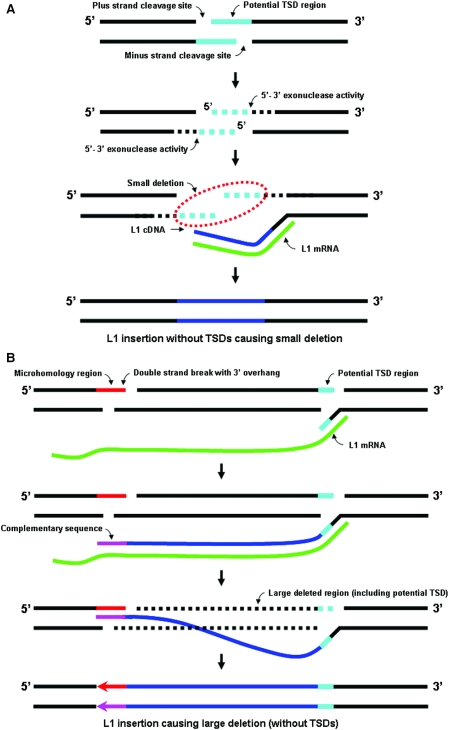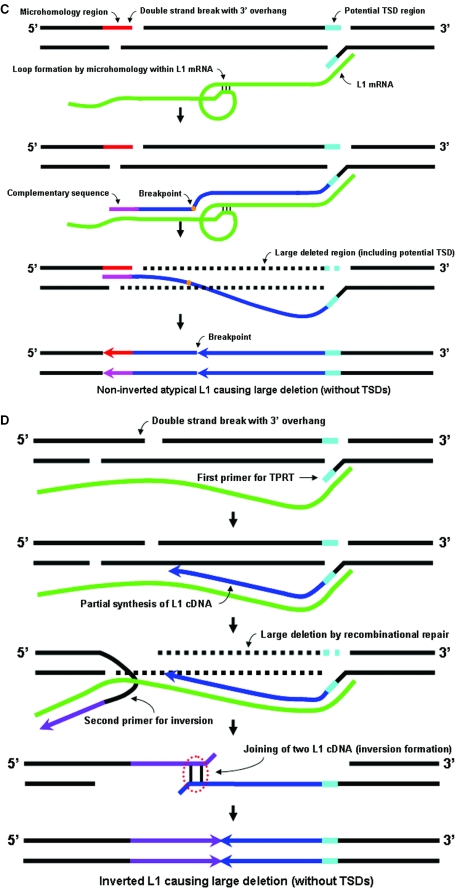Figure 5.
Models for the creation of L1IMDs and formation of deletion associated inverted L1 elements. (A) Formation of small deletions. 5′ overhangs created by inexact cleavage of the top strand by the L1 EN are subject to 5′–3′ exonuclease activity that removes small single-stranded stretches from both the plus and minus strands (dotted light blue lines), which would otherwise have been the templates for the formation of TSDs. Subsequent ligation of the L1 cDNA to the upstream minus-strand sequence and plus-strand sequence synthesis by cellular enzymes results in the creation of small deletions and an L1 insertion without TSDs. (B) Formation of large deletions. For any preexisting double-strand break that has a 3′ overhang (red) for base pairing of the L1 cDNA (blue), a longer cDNA transcript is more likely to contain a stretch of sequence that has adequate complementary bases for annealing (pink) than a shorter one. Subsequent recombinational repair would remove a large segment of the target sequence, extending downstream to the original integration site (dotted black line) and resulting in a L1 insertion without TSDs. (C) Formation of a non-inverted atypical L1 insertion resulting in a large deletion. The L1 mRNA (green) forms a loop, with microhomology stretches within its sequence annealing to each other. The resulting L1 cDNA (blue) has an internal breakpoint (orange) where a stretch of the consensus sequence (complementary to the loop) is missing. Arrows show the orientation of the two parts of the L1 insertion. (D) Formation of a 5′ truncation/inversion resulting in a large deletion. Annealing of the L1 mRNA (green) to a complementary sequence in the 3′ overhang of a preexisting double-strand break leads to the transcription of a second stretch (purple) apart from the original cDNA (blue). Subsequently, both dissociate from the mRNA and form an ‘inversion junction’ (circled in red). Recombinational repair removes the stretch of DNA between the double-strand break and the original site of integration. Plus-strand synthesis results in a 5′ truncated L1 with the inverted portion being reverse complementary to the consensus sequence. Arrows show the orientation of the L1 segments in the inversion.


